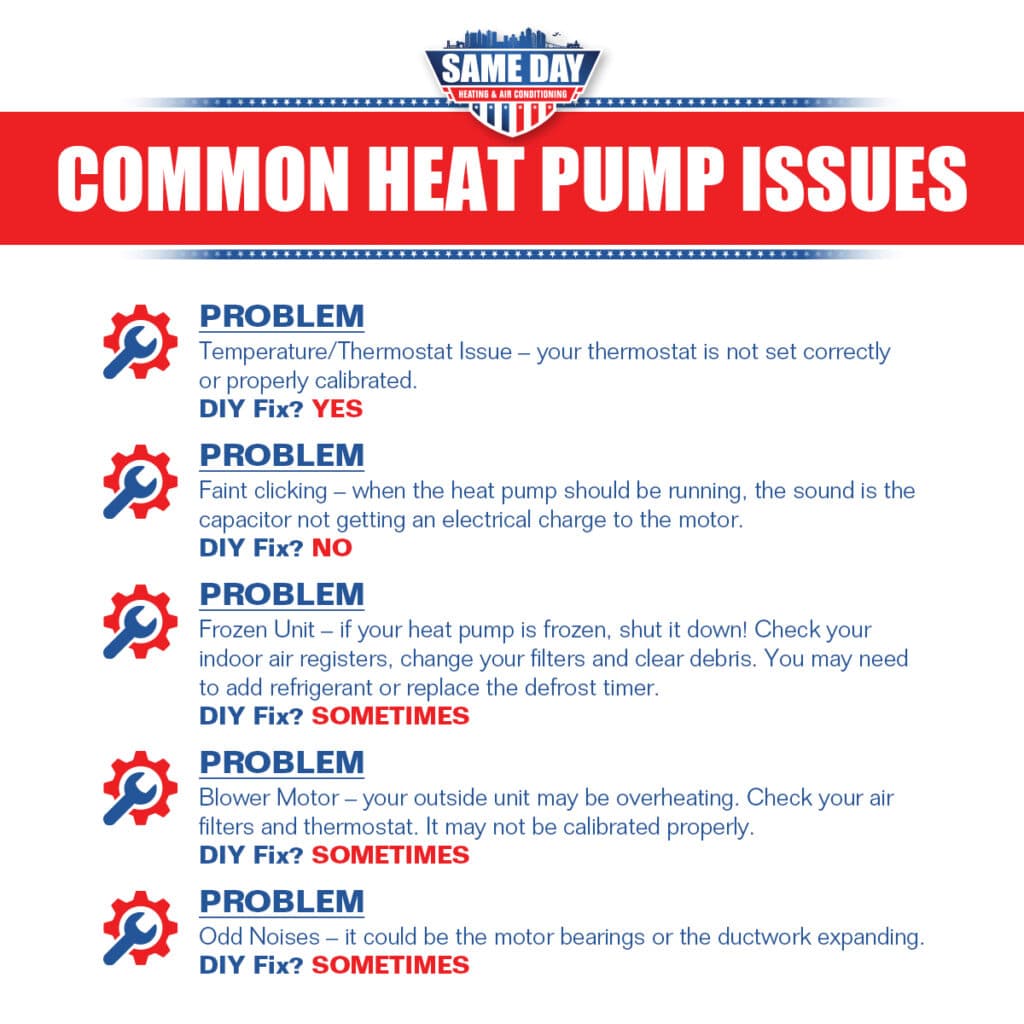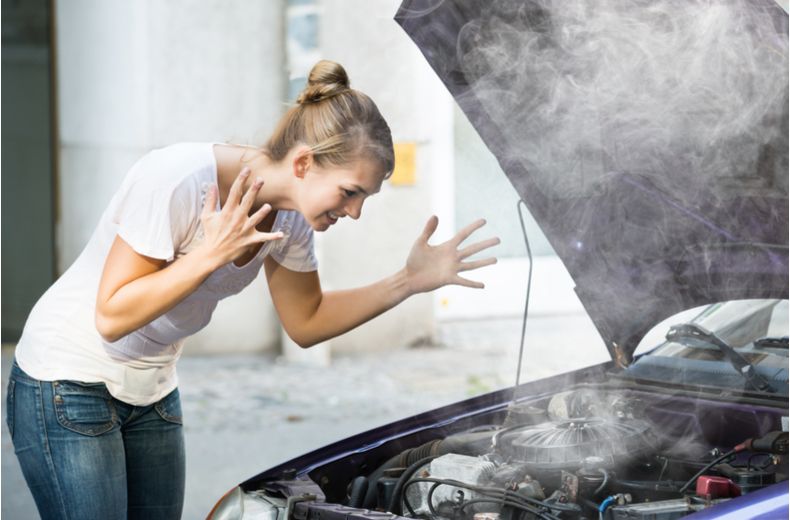When a car won’t start after overheating, it could be due to a warped cylinder head or blown head gasket. Overheating can lead to significant damage to the engine, causing issues with the pistons, valves, and other components, ultimately preventing the car from starting.
Overheating can cause severe damage to various engine parts, leading to starting issues. If your car won’t start after overheating, it’s crucial to address the underlying issues promptly. Ignoring these issues can result in further damage to the engine and more costly repairs.
We’ll explore the common reasons why a car won’t start after overheating and provide some troubleshooting tips to help you get back on the road.
Common Causes Of Overheating
Owning a vehicle can be a rewarding experience, but it comes with its own set of challenges. One common issue that many car owners face is overheating. When a car overheats, it can lead to several problems, including the car not starting. Understanding the common causes of overheating can help car owners diagnose and fix the issue, preventing further damage to their vehicles. Below are some common causes of overheating that can lead to a car not starting.
Radiator Hose Leak
One of the common causes of overheating in a car is a radiator hose leak. The radiator hose is responsible for carrying coolant from the radiator to the engine to regulate its temperature. When the hose develops a leak, coolant can escape, leading to an insufficient amount of coolant in the system. This can cause the engine to overheat, and if left unresolved, it can eventually lead to the car not starting.
Faulty Thermostat
Another potential culprit for car overheating is a faulty thermostat. The thermostat is responsible for regulating the flow of coolant through the engine. If the thermostat malfunctions, it can cause the coolant to not circulate properly, leading to overheating. In some cases, a faulty thermostat can also cause the car not to start after overheating due to the lack of proper temperature regulation in the engine.
Low Coolant Level
A low coolant level is a common issue that can lead to overheating and eventually prevent the car from starting. Coolant is essential for regulating the engine’s temperature, and when the coolant level is low, the engine can quickly overheat. Checking and maintaining the proper coolant level is crucial in preventing the car from overheating and failing to start.
Effects Of Overheating On The Car’s Starting
When a car overheats, it can lead to a myriad of issues, and one of the most common problems is that the car won’t start. Understanding the effects of overheating on the car’s starting is crucial for car owners, as it can help diagnose the underlying issues and prevent further damage.
Electrical Damage
When a car overheats, the excess heat can cause damage to the electrical components of the vehicle. The heat may cause electrical wiring to melt or the insulation around the wires to degrade. This can lead to shorts in the electrical system, preventing the car from starting. Additionally, components such as the starter motor and alternator can be affected, further hindering the vehicle’s ability to start.
Engine Problems
Overheating can cause significant damage to the engine, which in turn affects the car’s starting. The extreme heat can cause the engine block to warp, pistons to seize, or the cylinder head to crack. These issues can prevent the engine from turning over and starting. Additionally, overheating can lead to coolant loss, resulting in the engine running too hot, which can cause further damage to components like the gaskets and seals, ultimately impacting the car’s ability to start.
Checking For Signs Of Overheating
To prevent serious damage to your car’s engine, it’s crucial to regularly check for signs of overheating. By being vigilant, you can catch any issues early on and avoid being stuck with a car that won’t start after overheating. Two common signs to watch out for are:
Smoke From The Engine
If you notice smoke billowing from your car’s engine, it’s a clear sign that it’s overheating. This could be due to a coolant leak or a malfunctioning cooling system. Driving with an overheated engine can lead to severe damage, so it’s essential to pull over as soon as it’s safe to do so.
High Temperature Gauge Reading
An unusually high temperature gauge reading is another indicator of overheating. Keep an eye on your car’s temperature gauge as you drive. If you see the needle veering into the red zone or fluctuating erratically, it’s time to take action. This could mean that the cooling system isn’t functioning correctly, and immediate attention is required.
When facing any of these signs, remember to prioritize safety and reliability over attempting to restart your car in a potentially hazardous condition. Look for a safe place to pull over and assess the situation. Turning off your engine and allowing it to cool down is crucial to prevent further damage.

Credit: samedaysd.com
Troubleshooting Tips
Experiencing a car that won’t start after overheating can be frustrating and worrisome. However, identifying and resolving the underlying issues can save you time, money, and potential headaches. Follow these troubleshooting tips to get back on the road as quickly as possible.
Waiting For The Engine To Cool
If your car has recently overheated and refuses to start, it’s crucial to allow the engine to cool down completely before attempting any further troubleshooting. Trying to start the engine immediately after overheating can cause severe damage. Wait until the engine feels cool to the touch before proceeding.
Checking Coolant Level
The next step is to check the coolant level in your vehicle. Low coolant levels can lead to overheating and subsequent difficulties starting the engine. Locate the coolant reservoir, typically marked with a “coolant” label, and carefully remove the cap. Ensure the coolant level is between the minimum and maximum markings. If it’s below the recommended level, add a 50/50 mixture of coolant and water until it reaches the appropriate mark.
Inspecting The Radiator Hose
The radiator hose plays a vital role in preventing overheating by circulating coolant throughout the engine. A damaged or clogged hose can impede proper flow, resulting in overheating and starting issues. Inspect the radiator hose for any visible signs of wear, such as cracks, leaks, or bulges. Additionally, ensure the hose clamps are tight and secure.
If you notice any issues with the radiator hose, it’s best to have it replaced by a professional mechanic. Attempting to fix it yourself without the necessary knowledge and tools could lead to further damage or inefficiencies.
These troubleshooting tips can help you identify and resolve the issues causing your car to not start after overheating. Remember to exercise caution, and if the problem persists after these steps, consult a qualified mechanic for a thorough diagnosis and repair.
Potential Solutions
Experiencing a car that won’t start after overheating can be both frustrating and inconvenient. However, there are a few potential solutions to get your vehicle up and running again. By addressing the underlying culprits, such as a faulty radiator hose, a malfunctioning thermostat, or low coolant levels, you can increase your chances of successfully resolving the issue. Let’s take a closer look at each of these potential solutions.
Replacing Faulty Radiator Hose
If your car is overheating and won’t start, a faulty radiator hose could be to blame. The radiator hose is responsible for carrying coolant from the radiator to the engine. Over time, these hoses can degrade or develop leaks due to wear and tear. In some cases, a visual inspection of the hose may reveal cracks, bulges, or leaks. If any of these signs are present, it’s crucial to replace the faulty radiator hose.
Replacing the radiator hose is a relatively simple process that can be done with a few basic tools. Start by allowing the engine to cool down completely. Next, locate the radiator hoses, which are typically connected to the radiator and the engine. Carefully remove the clamps securing the hose in place, and then detach the hose from both ends. Replace the old hose with a new one, making sure to connect it securely. Finally, tighten the clamps to ensure a proper seal.
Repairing Or Replacing The Thermostat
A malfunctioning thermostat can also contribute to a car that won’t start after overheating. The thermostat regulates the engine’s temperature by controlling the flow of coolant. When the thermostat fails, it can get stuck in the closed position, preventing coolant from entering the engine and causing it to overheat. In some cases, the thermostat may also become stuck in the open position, leading to inefficient cooling.
To determine if the thermostat is faulty, you can perform a simple test. Start by allowing the engine to cool down completely. Remove the thermostat from the vehicle and place it in a pot of boiling water. If it doesn’t open, it’s likely defective and needs to be replaced. However, if it does open, the issue may lie elsewhere.
If you’re not comfortable performing this test or if you’ve confirmed a faulty thermostat, it’s best to consult a professional mechanic. They can assess the situation and either repair or replace the thermostat accordingly.
Refilling Coolant
Low coolant levels can lead to overheating and subsequent trouble starting your car. Coolant, also known as antifreeze, helps regulate the engine’s temperature and prevent it from overheating. Over time, coolant levels can become depleted due to leaks or evaporation. If your car has recently overheated and won’t start, it’s crucial to check the coolant level.
Consult your vehicle’s manual to locate the coolant reservoir. Open the reservoir cap slowly, ensuring the engine is completely cool. If the coolant level is low, refill it with the recommended mixture of antifreeze and water. However, be cautious not to overfill the reservoir, as this can lead to other issues. Once the coolant level is adequate, securely reattach the reservoir cap.
By addressing these potential solutions, replacing a faulty radiator hose, repairing or replacing the thermostat, and refilling coolant, you can increase your chances of resolving the issue of a car that won’t start after overheating. Remember, if you’re unsure or uncomfortable with performing any of these tasks, it’s best to consult a professional mechanic for assistance.

Credit: www.way.com
Preventive Measures
If your car won’t start after overheating, taking preventive measures is crucial to avoid this issue. Regularly checking the coolant levels, ensuring proper ventilation under the hood, and promptly addressing any signs of overheating can help prevent this problem. Additionally, regular maintenance and servicing can also help to identify any potential issues before they occur.
Overheating is a common issue faced by car owners, and it can be frustrating to deal with a car that won’t start after overheating. However, by taking some preventive measures, you can avoid this problem altogether. In this section, we will discuss two important preventive measures: Regular Vehicle Maintenance and Avoiding Overheating in Extreme Conditions.Regular Vehicle Maintenance
Regular vehicle maintenance is crucial in preventing your car from overheating and subsequently not starting. By following these maintenance tips, you can ensure that your car stays in optimal condition:- Check the coolant level regularly and top it up if needed. Coolant helps regulate the temperature of the engine.
- Inspect the radiator and make sure it is clean and free from debris. A clogged radiator can cause the engine to overheat.
- Replace the radiator cap if it is damaged or not sealing properly. A faulty cap can cause coolant to leak, leading to overheating.
- Keep an eye on the engine oil level and quality. Low or dirty oil can contribute to engine overheating.
- Inspect the fan belts for signs of wear and replace them if necessary. Fan belts are responsible for the proper functioning of the cooling system.
Avoiding Overheating In Extreme Conditions
Extreme weather conditions can put additional strain on your car’s cooling system. To prevent overheating in such conditions, you should:- Avoid prolonged idling, especially on hot days. Idling for extended periods can lead to overheating.
- Use air conditioning sparingly, as it puts extra load on the engine and can cause overheating.
- Monitor the temperature gauge while driving, especially during hot weather. If it starts to rise, turn off the air conditioning and reduce speed to help cool down the engine.
- Find shade or a covered parking spot whenever possible to prevent direct exposure to the sun.
- If you encounter traffic congestion, try to take alternate routes or plan your trips during non-peak hours to avoid prolonged periods of stop-and-go driving.
When To Seek Professional Help
Persistent Starting Issues
If your car continues to have trouble starting after overheating, it’s imperative to seek professional help. Persistent starting issues following overheating could indicate serious damage to the engine or its components. Ignoring these problems can lead to further damage and more costly repairs in the long run.
Unusual Noises Or Smells
Unusual noises or smells during attempted startups post-overheating could be a red flag. From audible knocks and pings to the smell of burning rubber or coolant, these signs can point to serious engine trouble. It’s crucial to have a professional assess the situation promptly to prevent potential catastrophic failure.

Credit: www.rac.co.uk
Frequently Asked Questions Of Car Wont Start After Overheating
Why Won’t My Car Start After Overheating?
Overheating can cause damage to the engine and other components, leading to difficulties in starting the car. The excessive heat can warp the cylinder heads and engine block, resulting in poor compression and a failure to start. Additionally, overheating may also damage the electrical system, preventing the car from starting properly.
How Can I Diagnose If Overheating Caused My Car Not To Start?
To determine if overheating is the cause of your car not starting, start by checking the coolant level and ensuring it’s at the recommended level. Next, inspect the engine for any visible signs of damage such as leaks or warped parts.
You may also want to check the battery, as overheating can affect its performance. If these checks don’t identify the issue, it’s best to consult a professional mechanic.
What Can I Do If My Car Won’t Start After Overheating?
If your car won’t start after overheating, it’s advisable to first allow the engine to cool completely before attempting any further actions. Check the coolant level and top it up if needed. Inspect the engine for any visible leaks or damaged components.
If you’re unable to identify the issue or if there are other symptoms, such as strange noises or smoke, it’s best to have your car towed to a qualified mechanic for a thorough inspection and repairs.
Conclusion
To sum up, an overheated car not starting can be a frustrating and potentially costly issue. By understanding the common causes such as a blown head gasket, damaged radiator, or faulty thermostat, you can take necessary steps to prevent further damage and ensure a smooth-running vehicle.
Regular maintenance and proper cooling system care are crucial in avoiding the hassle of a car that won’t start due to overheating. Stay proactive and attentive to your car’s signs to keep it on the road and running smoothly for years to come.

